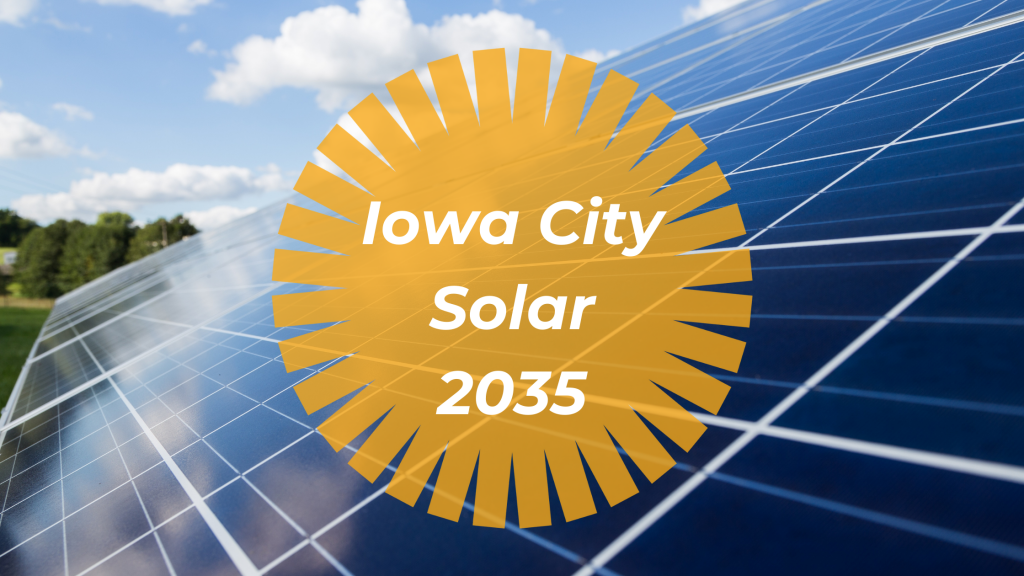Download Iowa City Solar 2035 Report
A new report calling for an ambitious expansion of solar energy in Iowa City over the coming decade has been released by the University of Iowa’s Iowa Initiative for Sustainable Communities and Johnson Clean Energy District. “Iowa City Solar 2035” explores technical and policy feasibilities of expanding solar energy, options for doing so, and community attitudes about solar projects. The study’s findings and recommendations were recently presented to Iowa City’s Climate Action Commission and now await official action.
The study was commissioned by the City after a solar farm proposed in Waterworks Park was halted due to unexpected community opposition. Although Iowa City has the considerable technical potential to generate electricity from solar – estimated at around 25% of the community’s electricity load – less than one-half of one percent currently is. A community survey found strong public support for solar, but also challenges, such as high upfront costs and structural incompatibilities for rooftop solar. Community solar, or “shared” solar gardens also face restrictive utility and state policies.
Ways to meet these challenges and plot a course forward include considering solar in planning and adopting a solar-ready building code according to Professor Scott Spak, UI School of Planning and Public Affairs, lead author of the report along with 10 UI Environmental Policy students. “Cohesive solar policies can help Iowa City meet its climate action goals and become a statewide solar leader,” he said.
Recommendations range from integrating solar into the City’s emergency and critical infrastructure to developing neighborhood-specific strategies for increasing solar. Extensive public engagement is recommended to avoid future opposition and to attract investment. The report also calls for partnering with MidAmerican Energy on community solar projects — PV installations available to subscribers that reduce costs and increase solar potential compared to rooftop solar on individual buildings. Potential sites for community solar gardens include parking lots, industrial areas, and leased land outside the city limits.
“The report presents an exciting vision of how solar can contribute to Iowa City’s future,” said Cheryl Miller, board member of Johnson Clean Energy District and one of the study’s organizers. “We need solar to meet our growing electricity demands, reduce greenhouse gas emissions, and increase the resiliency and affordability of our energy supply. This report helps chart that course.”
Additional information about this collaborative study can be found at:
Iowa Initiative for Sustainable Communities: https://iisc.uiowa.edu/iowa-city-solar-study

